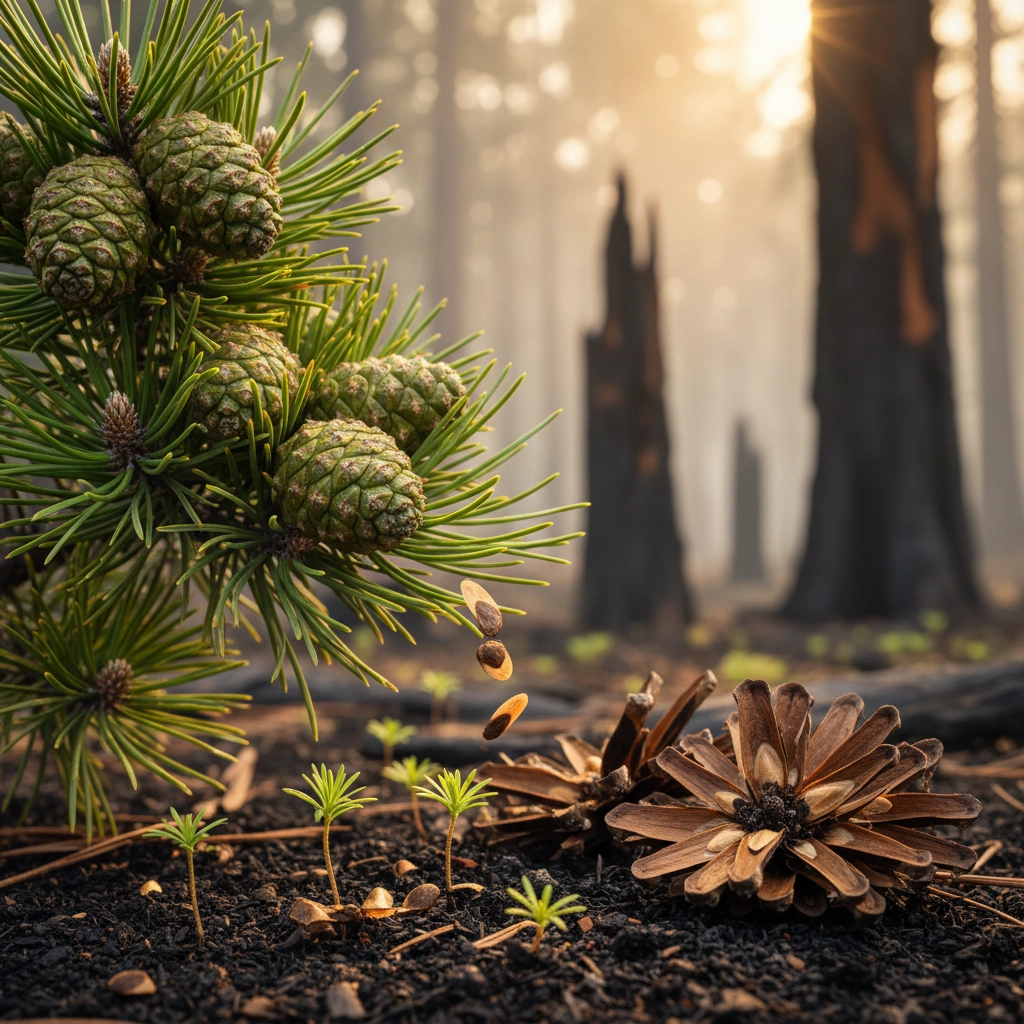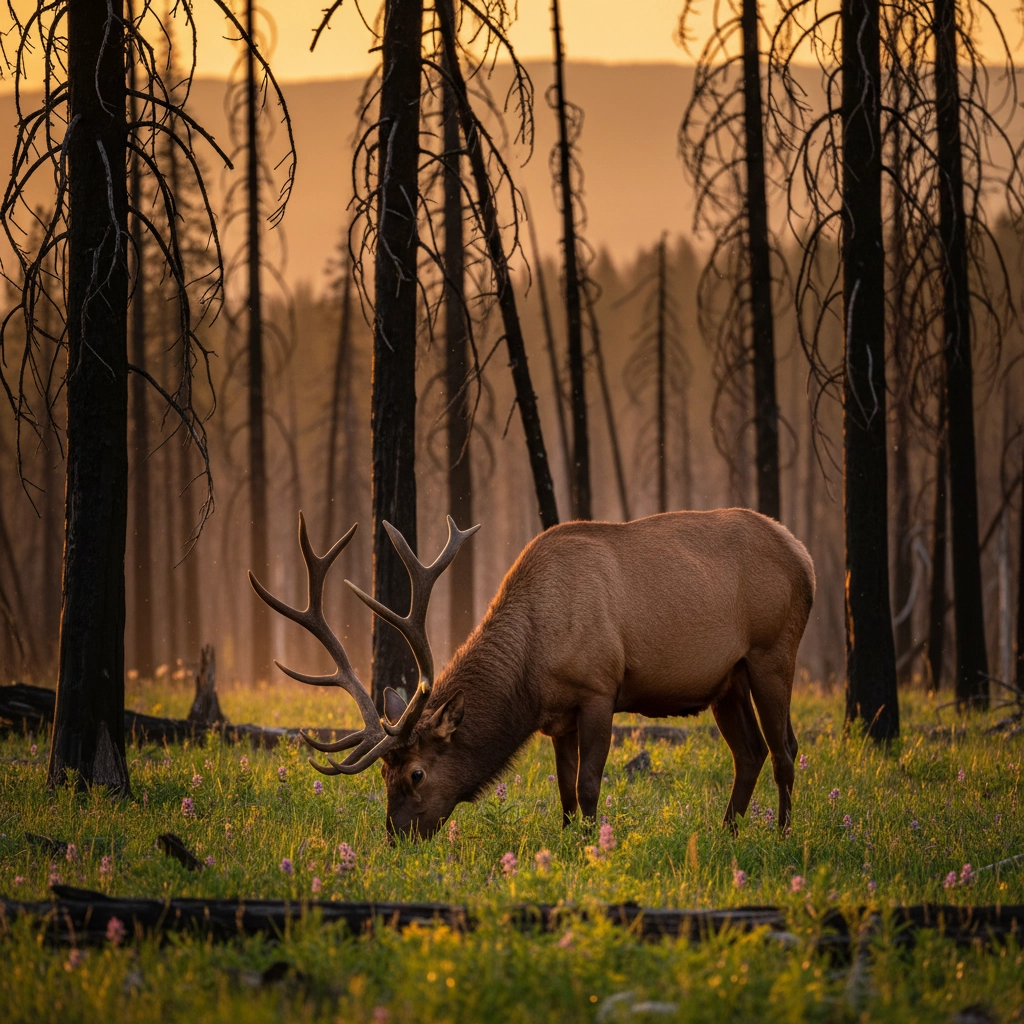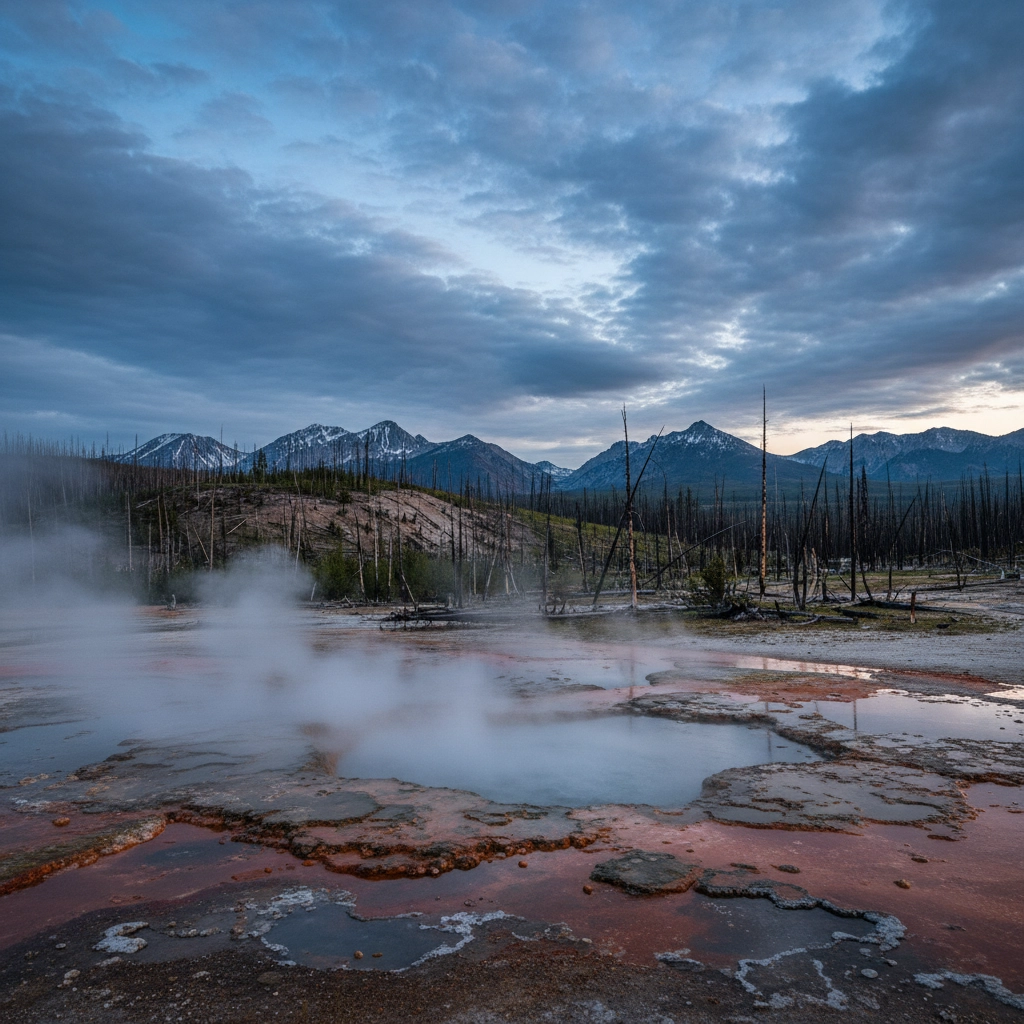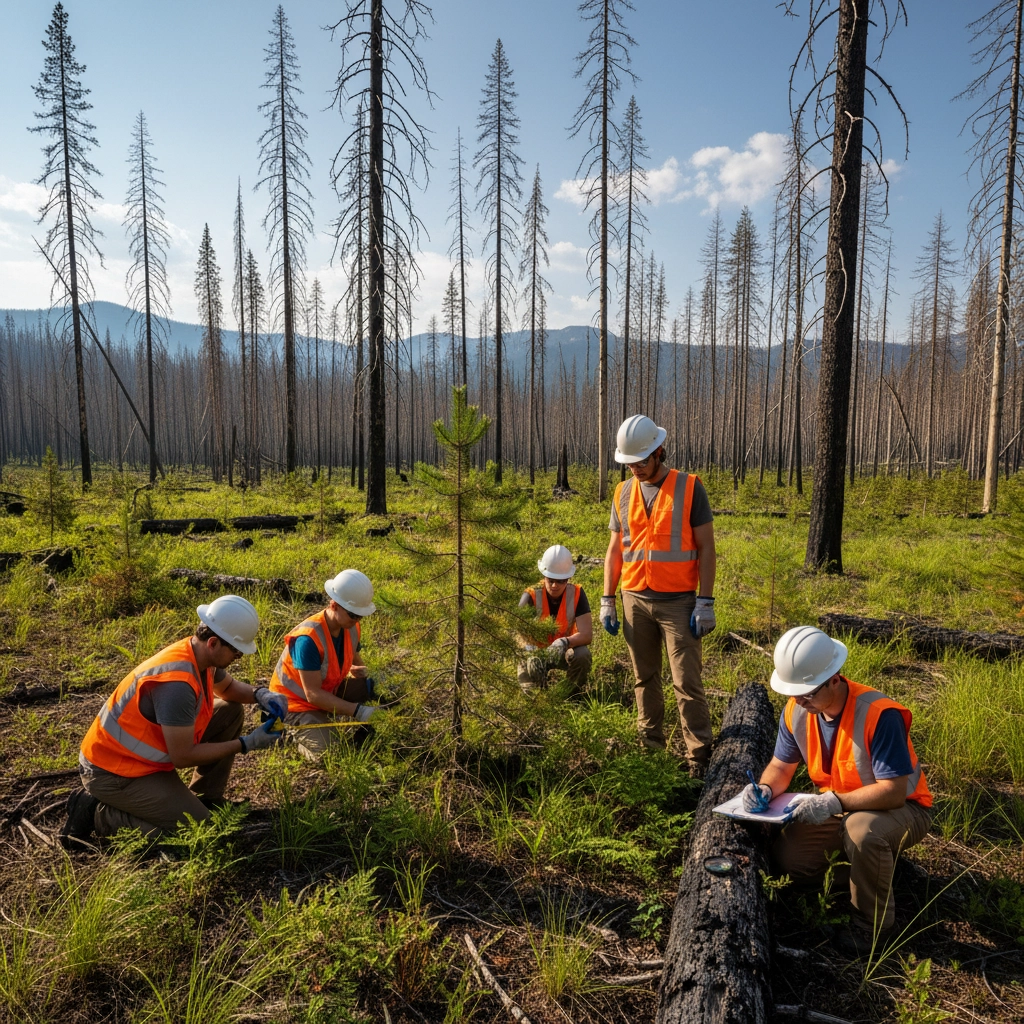Forest Fires and Yellowstone: A Teacher's Guide to Fire Ecology and Regeneration
- Caleb Mullenix
- Oct 21
- 5 min read
Updated: Oct 23
Preparing your students for a meaningful educational experience in Yellowstone National Park requires comprehensive understanding of one of nature's most powerful forces: fire. Understanding fire ecology is essential for any educator planning to lead students through America's first national park, where fire has shaped landscapes for thousands of years and continues to play a crucial role in ecosystem health and regeneration.
The Foundation: Understanding Fire as a Natural Process
Begin by establishing fire as a natural, necessary component of Yellowstone's ecosystem. Fire has been shaping the park's landscapes for over 5,000 years, creating the diverse habitats students will observe during their visit. Emphasize to students that fire is not a destructive force to be feared, but rather a natural process that maintains biodiversity and forest health.
Ensure students understand the fire triangle: fuel, oxygen, and heat: as the fundamental chemical reaction driving all fires. This scientific foundation will help them comprehend fire behavior patterns they may observe in burned areas throughout the park. Create detailed lesson plans that explain how weather conditions, topography, and fuel characteristics determine fire intensity and spread patterns.

Pre-Trip Curriculum: Essential Fire Ecology Concepts
Develop comprehensive pre-trip lessons covering three critical fire types students will encounter evidence of in Yellowstone:
Ground fires burn organic material in soil layers, creating long-lasting impacts on nutrient cycling. These fires burn slowly and can smolder for extended periods, fundamentally altering soil composition and creating conditions for specific plant regeneration.
Surface fires consume low-lying vegetation and forest floor debris, clearing understory growth and creating openings for new plant growth. Students will observe extensive evidence of surface fires throughout their Yellowstone experience.
Crown fires spread through tree canopies, creating the most dramatic landscape changes. These fires often result in complete forest regeneration cycles that students can observe in various stages throughout the park.
Plant Adaptations: Teaching Natural Fire Survival
Create engaging lessons about remarkable plant adaptations that allow species to thrive after fires. Focus on species students will encounter during their Yellowstone visit:
Lodgepole pines demonstrate serotinous cone adaptation: cones remain sealed until fire heat opens them, releasing seeds onto nutrient-rich, cleared soil. Students will observe extensive lodgepole regeneration areas throughout the park, providing excellent real-world examples of this adaptation.
Douglas-fir trees showcase bark thickness as fire protection, with mature trees surviving moderate fires due to their protective outer layers. Point out these survivors during field observations.
Discuss root sprouting capabilities in species like aspen and rabbitbrush, which regenerate from underground root systems after surface burning. Students will observe these regeneration patterns extensively in Yellowstone's diverse habitats.

Wildlife and Fire: Ecosystem Connections
Prepare students to observe how wildlife responds to and benefits from fire-created habitats. Many species depend on post-fire environments for optimal survival:
Large mammals including elk, bison, and deer benefit from increased forage production in burned areas. New growth provides higher-quality nutrition than mature forest vegetation. Students should observe wildlife concentrations in recently burned areas during their visit.
Bird species show distinct preferences for different post-fire stages. Woodpeckers thrive in recently burned forests with standing dead trees, while other species prefer grassland openings created by fires. Create identification guides for fire-adapted bird species students will encounter.
Small mammals including rodents and their predators benefit from increased habitat diversity created by fires. Discuss predator-prey relationships that develop in fire-regenerated areas.
Geological Connections: Volcanoes and Fire
Connect fire ecology to Yellowstone's volcanic foundation. The park sits atop an active volcanic system that has shaped its landscapes for millions of years. Explain how volcanic soils influence fire behavior and post-fire regeneration:
Volcanic soils retain moisture differently than other soil types, affecting fire intensity and spread patterns. These mineral-rich soils also support rapid plant regeneration after fires, creating the lush recovery students will observe in burned areas.
Discuss how Yellowstone's geothermal features interact with fire effects. Students will observe areas where hot springs and geysers create unique microclimates that influence local fire behavior and plant regeneration patterns.

Planning Safe Fire Site Exploration
Ensure student safety when exploring fire-affected areas by implementing comprehensive safety protocols:
Pre-visit site assessment is essential. Contact Yellowstone's education office to identify currently accessible burned areas appropriate for student groups. Some recently burned areas may have unstable trees or other hazards requiring restricted access.
Establish clear boundaries for student exploration in burned areas. Use rope or flagging to create visible exploration limits, ensuring students remain in safe zones away from potential hazards like falling trees or unstable ground.
Implement buddy system protocols in all fire-affected areas. Students must remain paired and within sight of supervising adults at all times during fire site exploration.
Carry comprehensive first aid supplies including burn treatment materials, even in older burned areas where fire danger no longer exists. Prepare for potential cuts from fallen branches or twisted ankles on uneven terrain.
Hands-On Learning Activities
Design interactive activities that reinforce fire ecology concepts during field experiences:
Regeneration timeline creation involves students measuring and recording different stages of plant growth in various burned areas. Provide measuring tools and data recording sheets for systematic observation of regeneration patterns.
Species identification challenges help students recognize fire-adapted plants and their specific adaptations. Create laminated field guides featuring key species students will encounter in burned areas.
Soil comparison activities allow students to examine soil characteristics in burned versus unburned areas. Provide tools for safe soil sampling and magnifying equipment for detailed observation.

Connecting Fire Ecology to Modern Conservation
Help students understand contemporary fire management challenges and solutions. Discuss how fire suppression policies of the past created unnatural fuel accumulations, leading to more severe fires when they eventually occurred.
Explain current fire management strategies that allow natural fires to burn under appropriate conditions, maintaining ecosystem health while protecting human developments. Students should understand how scientists monitor fire behavior and make management decisions.
Connect fire ecology to climate change impacts, discussing how changing weather patterns affect fire frequency and intensity. Encourage students to think critically about long-term ecosystem management challenges.
Assessment and Follow-Up Learning
Create comprehensive assessment tools to evaluate student understanding of fire ecology concepts:
Pre-trip assessments should test baseline knowledge of fire science, plant adaptations, and ecosystem relationships. Use these results to adjust field instruction focus areas.
Field observation journals allow students to document fire ecology observations throughout their visit. Provide structured recording sheets with specific observation prompts and sketch areas.
Post-trip projects can include regeneration timeline presentations, fire adaptation research reports, or ecosystem management policy recommendations based on their Yellowstone observations.
Building Long-Term Understanding
Emphasize that fire ecology understanding extends beyond Yellowstone to forests worldwide. Students should recognize fire's role in maintaining diverse ecosystems and understand why fire suppression can create long-term ecological problems.
Encourage students to observe fire ecology principles in their local environments, creating connections between Yellowstone experiences and hometown ecosystems. Provide resources for continued learning about fire ecology and ecosystem management.

Preparing students for meaningful fire ecology learning in Yellowstone requires comprehensive pre-trip education, careful safety planning, and structured field activities that connect scientific concepts to real-world observations. Through systematic preparation and thoughtful implementation, educators can provide students with profound understanding of fire's essential role in maintaining healthy ecosystems while ensuring safe, engaging learning experiences that inspire lifelong environmental stewardship.



Comments